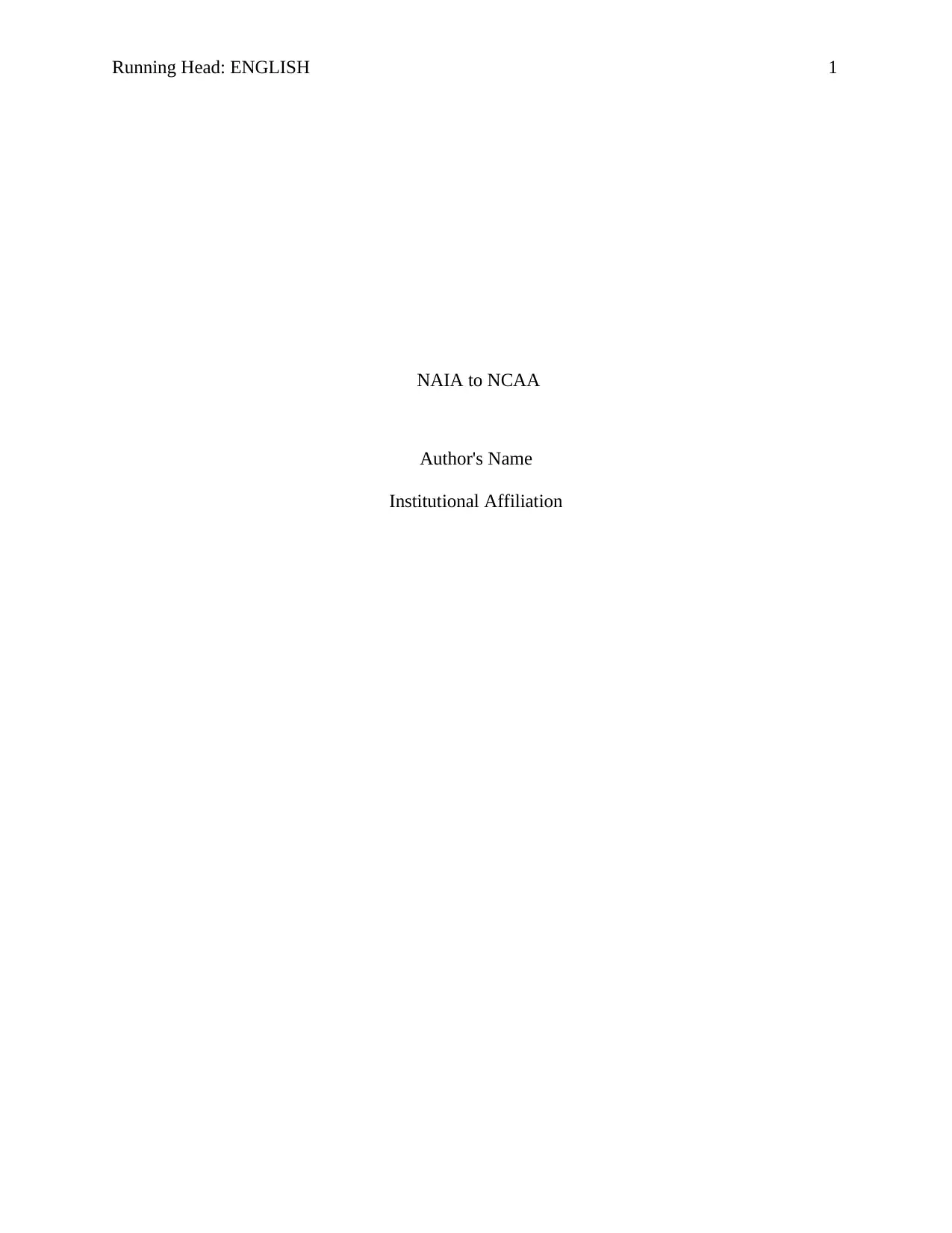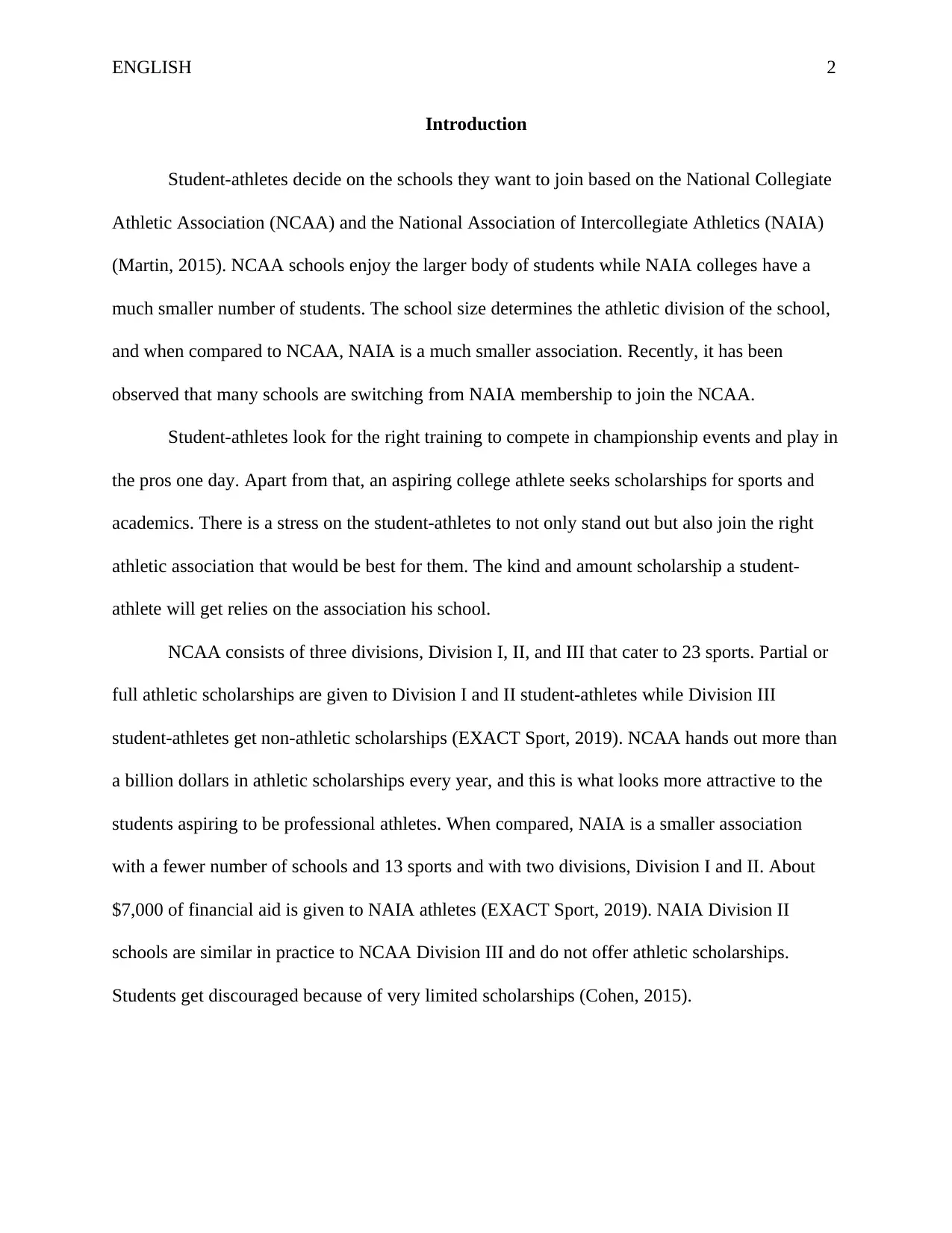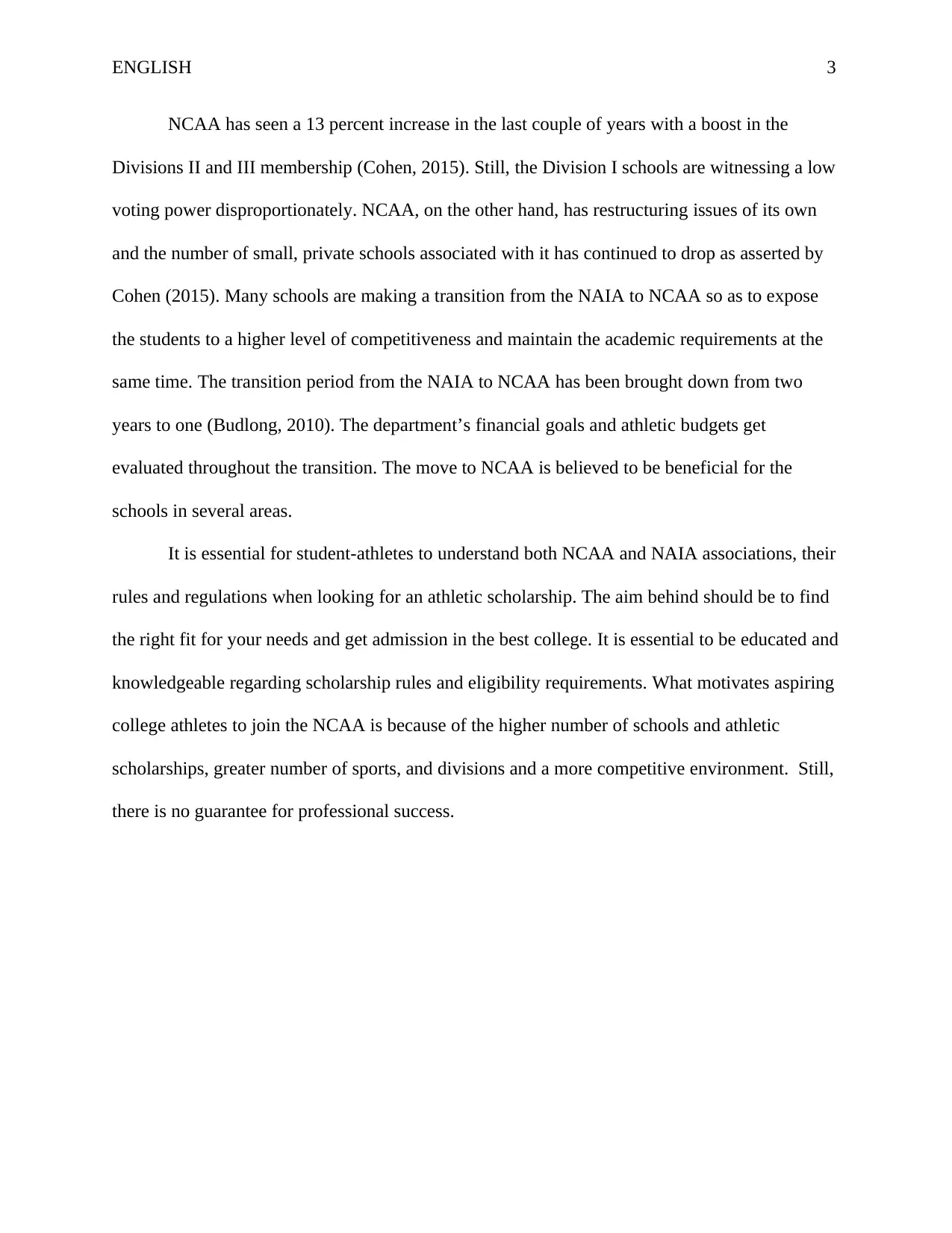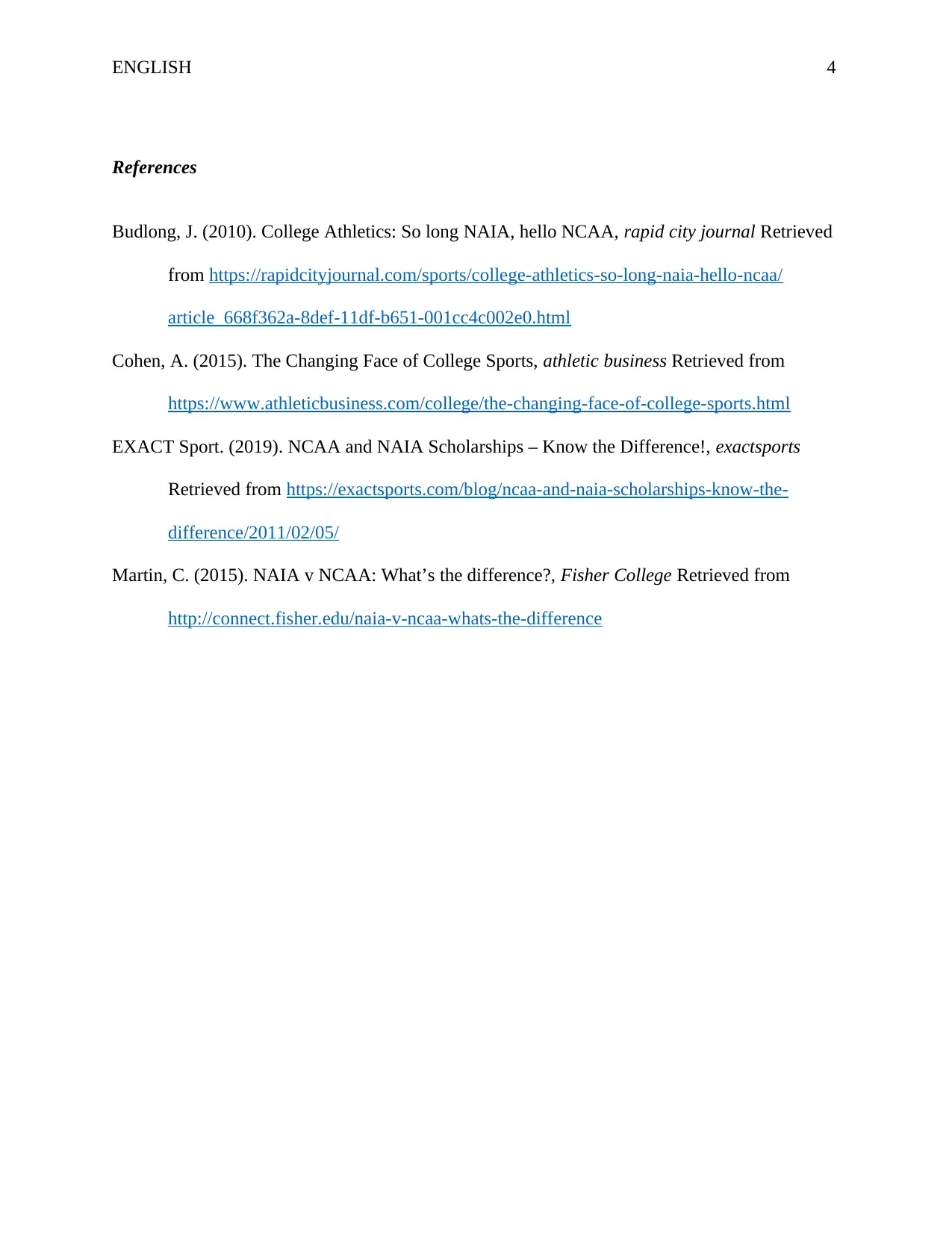NAIA vs NCAA: Choosing the Right Athletic Path for College Athletes
VerifiedAdded on 2023/04/08
|4
|604
|226
Essay
AI Summary
This essay provides a comparative analysis of the National Association of Intercollegiate Athletics (NAIA) and the National Collegiate Athletic Association (NCAA) to help student-athletes make informed decisions about their college athletic careers. It highlights the key differences between the two associations, including the number of schools, the availability of athletic scholarships, the range of sports offered, and the level of competition. NCAA, with its three divisions, offers more scholarships and a more competitive environment, while NAIA, a smaller association, provides a more intimate setting with limited financial aid. The essay also touches on the increasing trend of schools transitioning from NAIA to NCAA, driven by the desire to enhance competitiveness and maintain academic standards. Ultimately, the essay emphasizes the importance of understanding the rules, regulations, and eligibility requirements of both associations to find the best fit for individual needs and aspirations. Desklib provides access to similar solved assignments and study tools for students.
1 out of 4






![[object Object]](/_next/static/media/star-bottom.7253800d.svg)